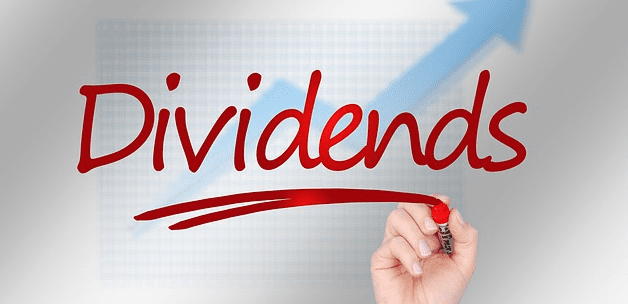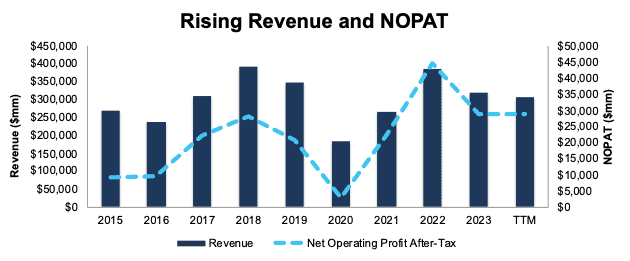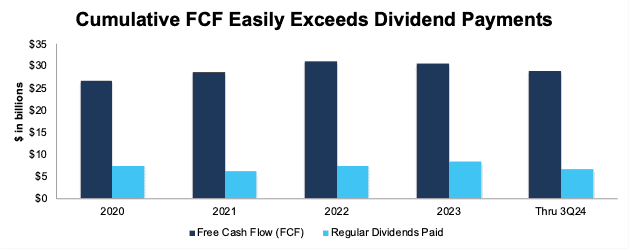Tariffs have been a hot topic since Trump started his second term, and many investors are worried about the long-term consequences. On the surface it’s a simple idea, if we tax foreign imports, we will strengthen our own industries by creating more jobs and generating more cash. But, it doesn’t always work so simply.
When president Trump instituted tariffs on foreign steel in order to protect U.S. blue collar jobs in 2018, researchers estimate U.S steel producers added about 1,000 new jobs. However, the knock-on effects, namely input costs for U.S. industries that use steel, resulted in an estimated 75,000 fewer manufacturing jobs.
The ongoing tariffs, and the uncertainty surrounding additional tariffs, will continue to stoke market volatility. Finding strong businesses with cheap valuations is hard enough, and new trade policies and tariffs only make that job more difficult.
That’s where New Constructs steps in. Even in volatile markets, our database scours the entire market to find the best investment opportunities. Diligence matters, now more than ever, especially in a new Golden Era of Investing.
We work hard to bring you proven-superior research, and we are proud to share it. Below you will find a free stock pick. This summary is not a full Long Idea report, but it will give you insight into the rigor of our research and approach to picking stocks.
Today’s free stock pick provides a summary of how we pick stocks for the Safest Dividend Yields Model Portfolio.
We hope you enjoy this free research on this month’s featured stock for the Safest Dividend Yields Model Portfolio. Feel free to share this report with friends and colleagues.
This Model Portfolio only includes stocks that earn an Attractive or Very Attractive rating, have positive free cash flow (FCF) and economic earnings, and offer a dividend yield greater than 3%. Companies with strong free cash flow provide higher quality and safer dividend yields because strong FCF supports the dividend. We think this portfolio provides a uniquely well-screened group of stocks that can help clients outperform.
We update this Model Portfolio monthly. February’s Safest Dividend Yields Model Portfolio was updated and published for clients on February 21, 2025.
Free Stock Pick: Shell, PLC (SHEL: $67/share)
Shell, PLC (SHEL) is the featured stock in February’s Safest Dividend Yields Model Portfolio.
Shell has grown revenue and net operating profit after tax (NOPAT) by 1% and 14% compounded annually, respectively, since 2015. The company’s NOPAT margin improved from 3% in 2015 to 9% in the TTM, while invested capital turns remained the same at 0.8 over the same time. Rising NOPAT margins drive the company’s return on invested capital (ROIC) from 3% in 2015 to 8% in the TTM.
Figure 1: Shell’s Revenue & NOPAT Since 2015
Sources: New Constructs, LLC and company filings
Free Cash Flow Exceeds Regular Dividend Payments
Shell has increased its regular dividend from $0.32/share in 2Q20 to $0.72/share in 1Q25. The current quarterly dividend, when annualized provides a 4.2% dividend yield.
The company’s free cash flow (FCF) easily exceeds its regular dividend payments. From 2020 through 3Q24, the company generated $145.7 billion (53% of current enterprise value) in FCF while paying $36 billion in regular dividends. See Figure 2.
Figure 2: Shell’s FCF Vs. Regular Dividends Since 2020
Sources: New Constructs, LLC and company filings
As Figure 2 shows, this company’s dividends are backed by a history of reliable cash flows. Dividends from companies with low or negative FCF are less dependable since the company would not be able to sustain paying dividends.
SHEL Is Undervalued
At its current price of $67/share, this stock has a price-to-economic book value (PEBV) ratio of 0.5. This ratio means the market expects the company’s NOPAT to permanently fall 50% from TTM levels. This expectation seems overly pessimistic given that the company has grown NOPAT 14% compounded annually over the last eight years and 3% compounded annually over the past decade.
Even if the company’s:
- NOPAT margin falls to 6% (below five-year average margin of 8% and below TTM margin of 9%) and
- revenue grows just 1% compounded annually through 2033,
the stock would be worth $91/share today – a 36% upside. In this scenario, the company’s NOPAT would actually fall 3% compounded annually through 2033.
Should the company’s NOPAT grow more in line with historical growth rates, the stock has even more upside.
Critical Details Found in Financial Filings by Our Robo-Analyst Technology
Below are specifics on the adjustments we make based on Robo-Analyst findings in this featured stock’s 20-F and 6-Ks:
Income Statement: we made nearly $22 billion in adjustments with a net effect of removing just under $9 billion in non-operating expenses. Professional members can see all adjustments made to the company’s income statement on the GAAP Reconciliation tab on the Ratings page on our website.
Balance Sheet: we made around $127 billion in adjustments to calculate invested capital with a net increase of over $56 billion. The most notable adjustment was for asset write downs. Professional members can see all adjustments made to the company’s balance sheet on the GAAP Reconciliation tab on the Ratings page on our website.
Valuation: we made over $118 billion in adjustments to shareholder value, with a net decrease of around $52 billion. Other than total debt, the most notable adjustment to shareholder value was for excess cash. Professional members can see all adjustments to the company’s valuation on the GAAP Reconciliation tab on the Ratings page on our website.
This article was originally published on February 28, 2025.
Disclosure: David Trainer, Kyle Guske II, and Hakan Salt receive no compensation to write about any specific stock, style, or theme.
Questions on this report or others? Join our online community and connect with us directly.


